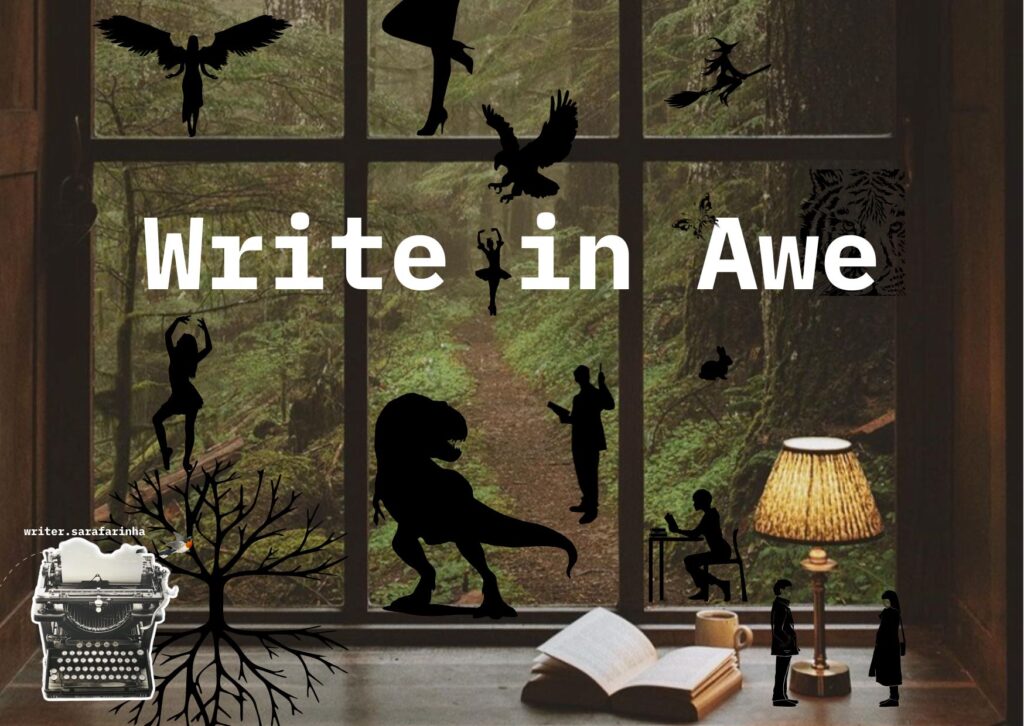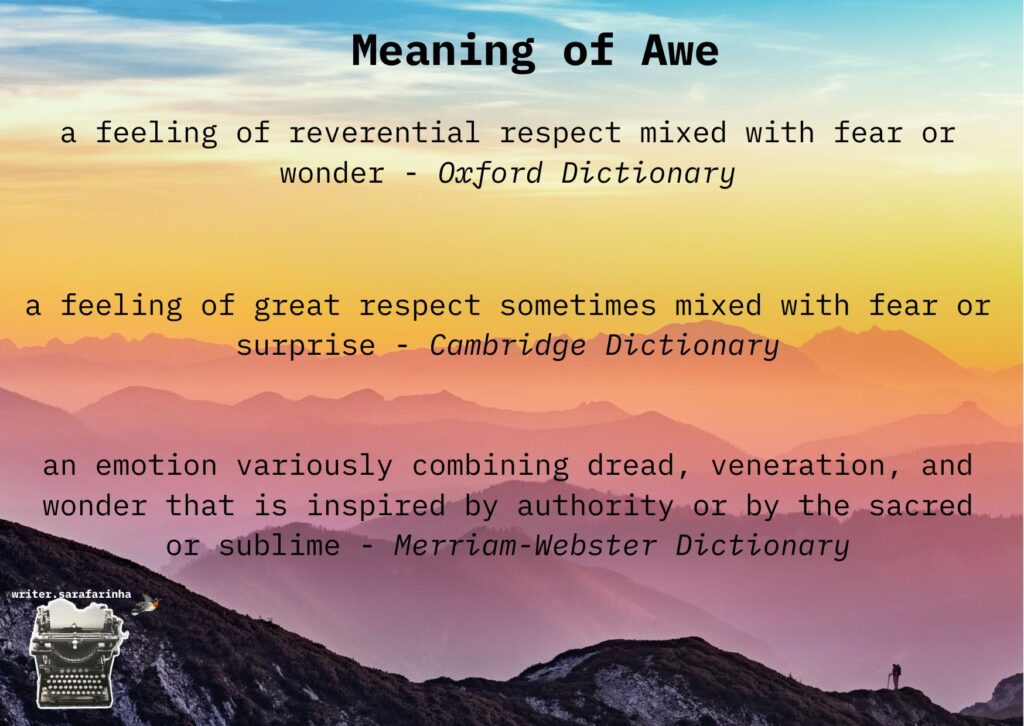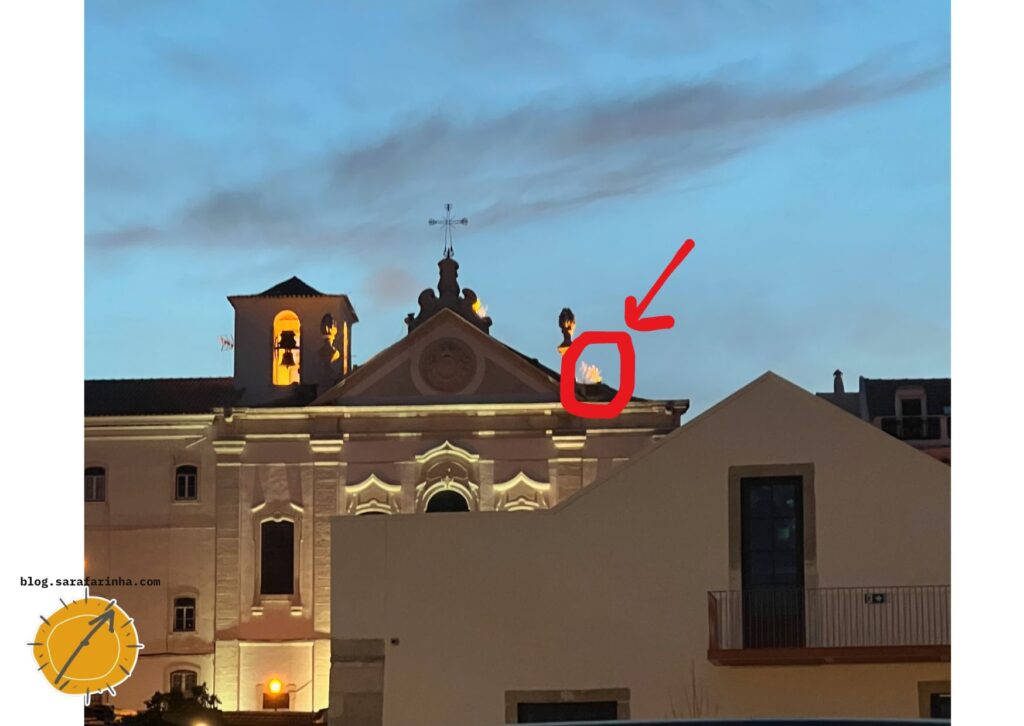
Hello all! Welcome back to this blog.
A few years ago I took a short online training called Every Day is a Poem, with Jacqueline Suskin (on Commune).
You may say ‘I don’t write poetry‘ or ‘why poetry matters when writing fiction?‘. Or not. If you write, you have a sense of musicality, or lack thereof, about the words you use.
But let me tell you, that first lesson of Every Day is a Poem, truly stuck with me.
It was called ‘Be in Awe of Everything‘. And it was a wake-up call to recognise all the awe inspiring things that surround us.
An invitation to find reverence in daily life, as an inspiration to express ourselves through poetry.

I have found this lesson very useful not just for poetry practice but for all types of writings. The subject of this lesson never seemed to slip my mind entirely.
And not just because I frequently catch myself wandering through Aweness on the most unexpected situations (i’m the weird adult that, in a social gathering, keeps staring at the ceiling because she saw something interesting there), but because I find it a sound advice in any creative writing practice.
A small example of awe: check the huge thistle on the church roof? It’s half the size of the artichoke statue! It is blurry because it was very windy…

It was not supposed to be there, after all the church is remodelled and in full use, but Life always find it’s way around obstacles, doesn’t she?!
[Yes, Life is a She, a Mother, a Creator of all sorts… just saying.]
Awe is what I aim for when I write for this blog. To inspire through awe, and get it on the page, and through to you.
I find that when we write with feeling, from the depts of our convictions, from the heart, we access to a part of ourselves that can be kind of lyrical, and truthful, and inspirational to ourselves and others.
When we let feelings flow through words, and scenes, and characters, we get a noticeable emotional experience. A powerful one, if done in awe.
It’s not about telling people that these characters are in love, it’s showing them what their love looks like, in a recognisable and inspiringly way. It’s to produce emotional imagery that readers can relate with.
To convey powerful feelings like these, we need to access to that part of ourselves that sees the awe in it. That recognises the feeling. That knows what Love may look like. That can envision the world shattering power of feelings.
And that’s what this process is all about: write to inspire, to enlighten, to soothe, to support, to help, to just be there when the words are needed.
The same goes for fiction, and for non-fiction also. Both aim to bring something more to the lives of the one’s who read the words.
Fiction moves through emotion and subtext.
Non-fiction lives in the realm of possibilities and inspiration.
To construct we need to have understanding of what is, and non-fiction serves this purpose. Its job is to convey awe in dealing with more down to earth subjects.
But to be in awe, in such a cynical world, and to write in awe are not simple tasks.
Sometimes, it takes all we have just to get through a few sentences. And other times, it just doesn’t come to us at all.
We keep getting to that point when we feel empty, bare of all awe induced mindset, uninspired.
Letting go of what is, the pain, the daily stress, the pressure, to find that feeling of reverential respect, of dazzle, can be a hard task.
And exterior inspiration can only take us so far.
To find within ourselves our will to create is to find awe in what is, and in what we are, and in what we desire to put forth in this world.
It’s to find our rituals, our creative processes, all the things that nurture an awe mindset. And to find this is adamant to be well, feel well, and create awe inspiring work, whatever that work might be.
***
Here’s a suggestions of a creative writing exercise for your practice: Awe Narrative
***
Please leave a comment and subscribe for more content.
Bye and Keep writing! ✍🏼
***
References:
- Every Day is a Poem by Jacqueline Suskin
- Commune website
- Meaning of Awe – Oxford Dictionary
- Meaning of Awe – Cambridge Dictionary
- Meaning of Awe – Merriam-Webster
- Photo of São Bartolomeu do Beato Parochial Church
- Awe Narrative Writing Exercise